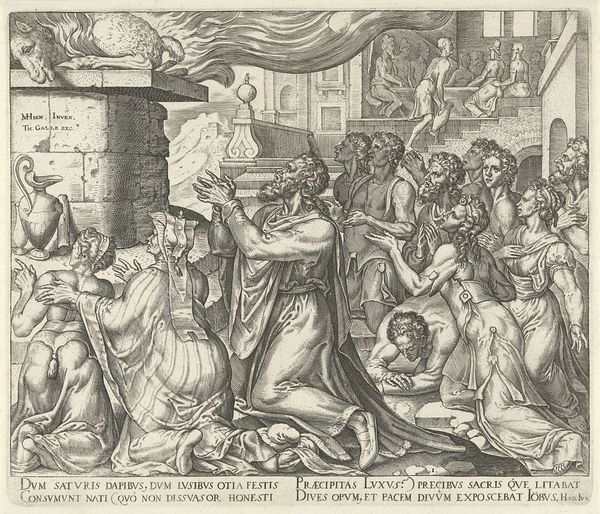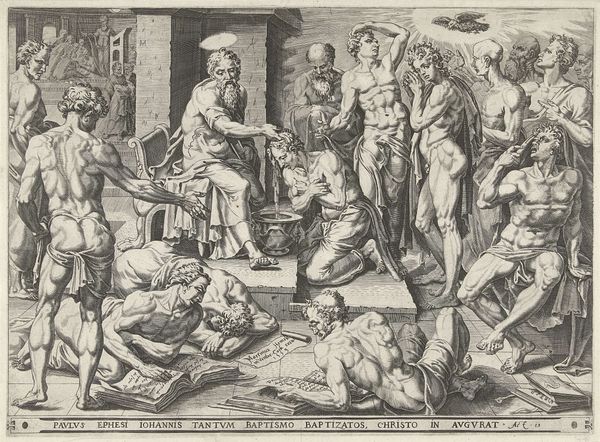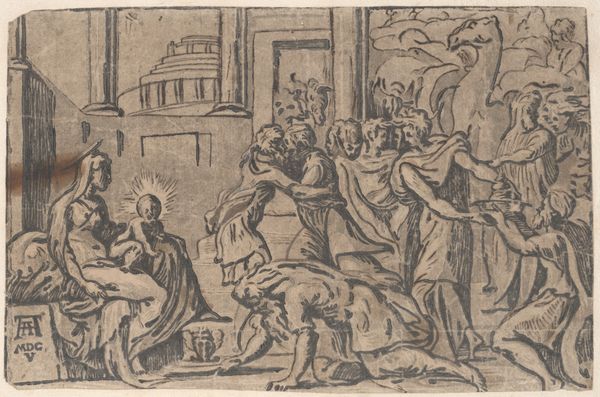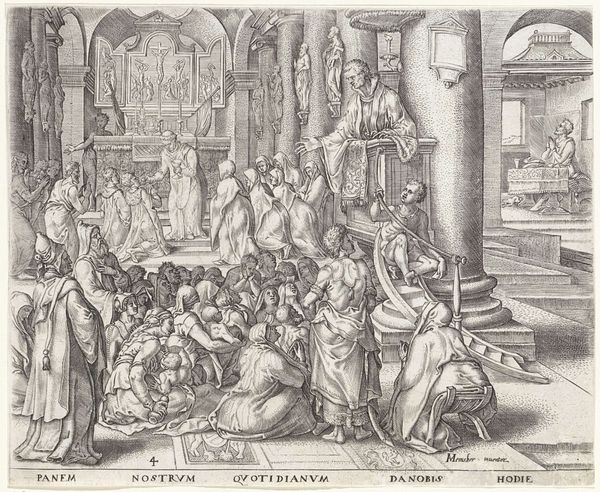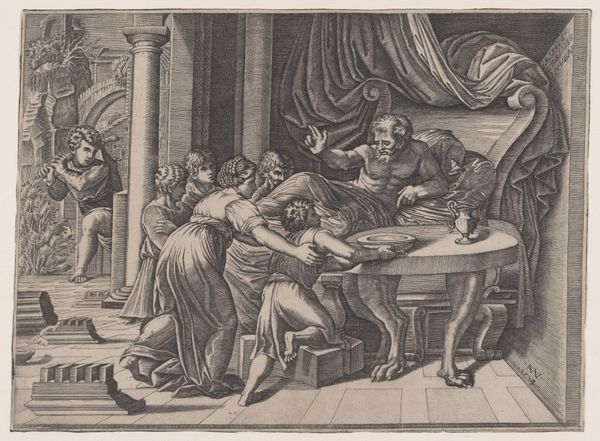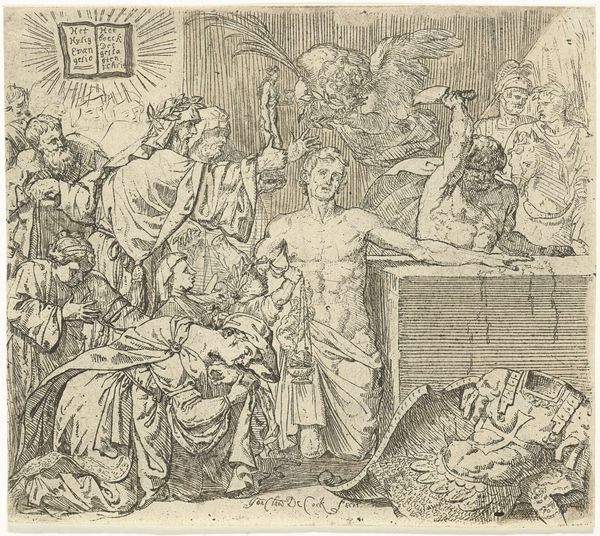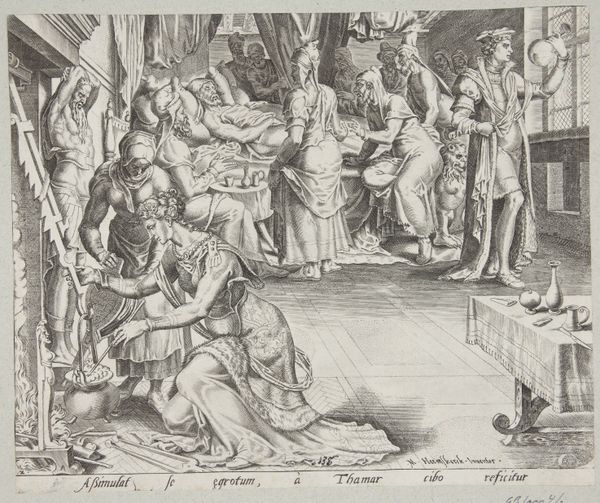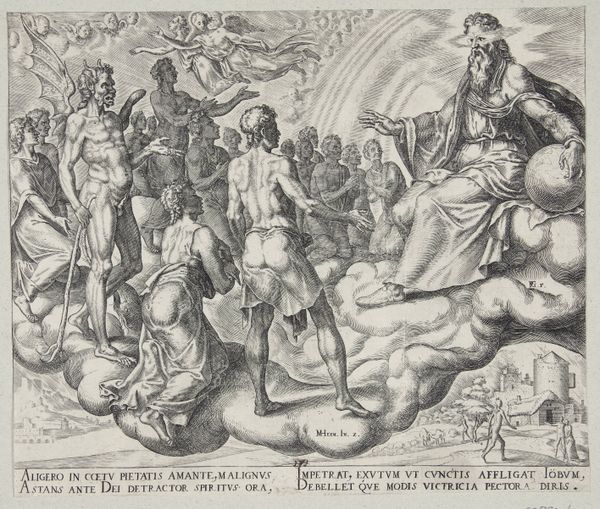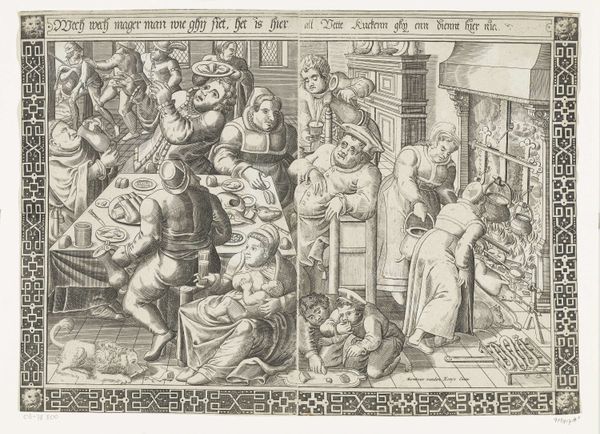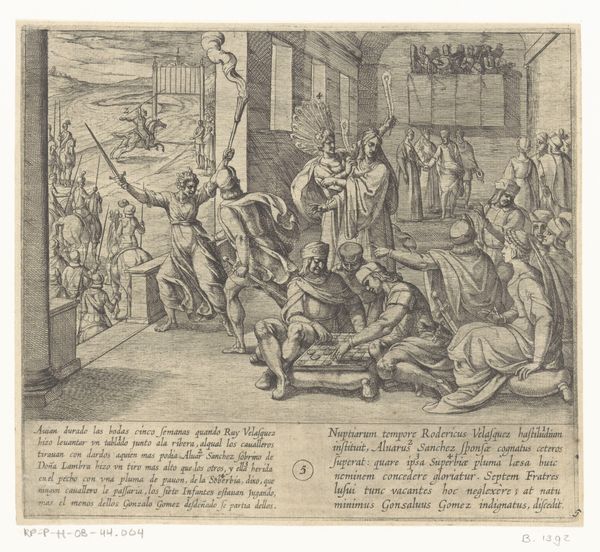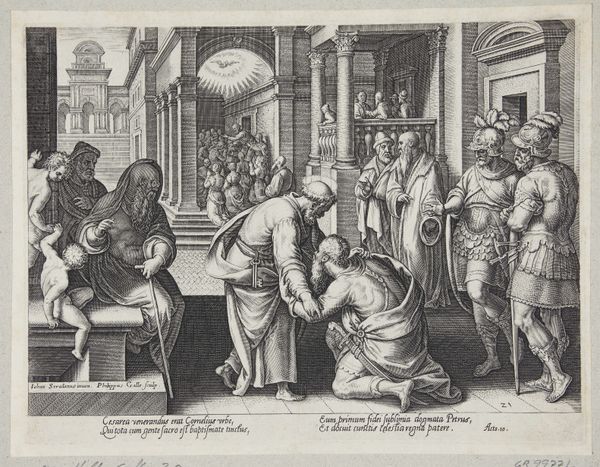
print, engraving
# print
#
figuration
#
history-painting
#
northern-renaissance
#
engraving
Dimensions: 207 mm (height) x 242 mm (width) (bladmaal)
Curator: Looking at this print, the initial feeling is one of intricate complexity; a mass of humanity rendered in meticulous detail. The tonal range is exquisite for an engraving. Editor: This engraving, dating back to 1563, is titled "Job sacrificing for the sins of his children," attributed to Philips Galle and held at the SMK, the National Gallery of Denmark. Galle, known for his skill in engraving, illustrates a biblical narrative. It's a striking example of Northern Renaissance printmaking. Curator: Yes, look how Galle uses line to create depth and texture, the cross-hatching in the figures robes. The positioning of Job creates a strong sense of perspective. The artist directs the eye toward the altar with the implied line from the supplicants' gaze, heightening the emotional tension. It strikes me how the poses feel so contrived, so… studied. Editor: Consider the historical context: prints like this disseminated biblical stories and moral lessons. The figures' poses are somewhat formulaic, characteristic of the Northern Renaissance and influenced by Italian Mannerism which emphasizes artifice and grace, reaching a wider audience. What moral is trying to be told do you think? Curator: Given that Job is sacrificing on behalf of his children, a profound statement on sin, atonement, and perhaps the inherent corruptibility of humanity. The stark contrast between the earthly figures and the celestial suggestion of sacrifice heightens that feeling, almost a critique of opulence against sacrifice. Editor: It serves to portray piety, illustrating an ideal moral stance. Beyond its intrinsic aesthetic, it offers insights into the era's religious and cultural beliefs, where religious narratives profoundly influenced societal conduct. Curator: I'd agree. The level of detail really draws you into the scene; you notice something new each time you examine the forms and rendering of light and dark. It shows just how effective engraving was, it gives one the ability to achieve this type of fine detail, where no space seems untouched. Editor: Quite right. It underscores art's historical role as a vehicle for instruction. Seeing art's potential influence and historical weight in the Northern Renaissance has deepened my appreciation for the print.
Comments
No comments
Be the first to comment and join the conversation on the ultimate creative platform.
